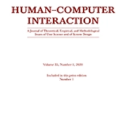Digital tools have long been used for supporting children's creativity. Digital games that allow children to create artifacts and express themselves in a playful environment serve as efficient Creativity Support Tools (or CSTs). Creativity is also scaffolded by social interactions with others in their environment. In our work, we explore the use of game-based interactions with a social agent to scaffold children's creative expression as game players. We designed three collaborative games and play-tested with 146 5-10 year old children played with the social robot Jibo, which affords three different kinds of creativity: verbal creativity, figural creativity and divergent thinking during creative problem solving. In this paper, we reflect on game mechanic practices that we incorporated to design for stimulating creativity in children. These strategies may be valuable to game designers and HCI researchers designing games and social agents for supporting children's creativity.
翻译:长期以来,一直使用数字工具支持儿童的创造力。允许儿童创造艺术品和在游戏环境中表达自我的数字游戏可以作为高效的创造性支持工具(或国家科技服务委员会 ) 。创造性还被与环境中其他人的社会互动所束缚。在我们的工作中,我们探索利用游戏与社会代理人的互动来将儿童创造性的表达作为游戏玩家。我们设计了三场协作游戏,并与146个5-10岁儿童一起与社会机器人Jibo一起进行了游戏测试,他们提供了三种不同的创造力:语言创造力、虚构的创造力和创造性问题的解决过程中的不同思维。在本文中,我们反思了我们为激励儿童的创造力而设计的游戏机械操作方法。这些策略对于游戏设计者以及为支持儿童的创造力而设计游戏和社会代理人的HCI研究人员可能很有价值。





